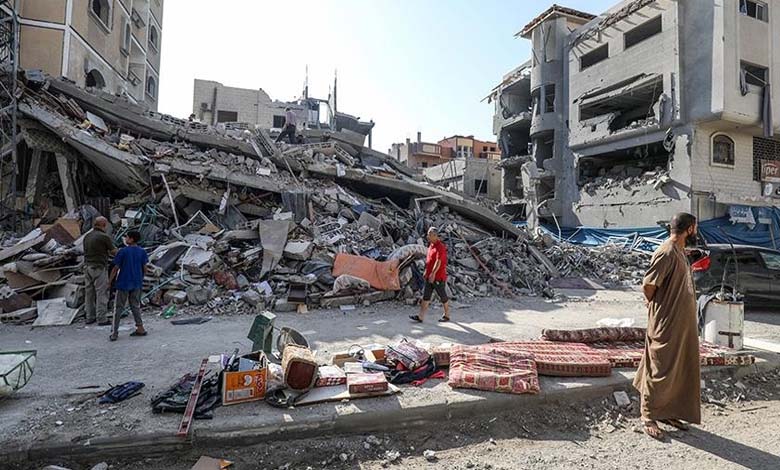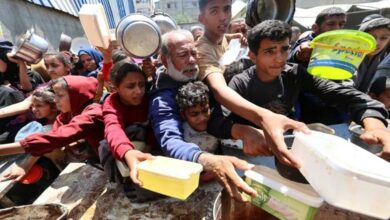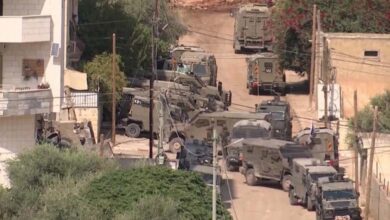Gazans Call for Aid to Combat Homelessness
Immediate funding needs are estimated at around $6.5 billion to provide temporary housing for Gaza’s more than two million residents.

As fighting in Gaza has halted, Palestinians are appealing for billions of dollars in emergency aid, ranging from heavy machinery to clear rubble to tents and mobile homes to shelter those displaced by Israeli bombardments.
A Palestinian Authority official estimated that immediate funding needs amount to around $6.5 billion to provide temporary housing for Gaza’s more than two million residents, even before tackling the massive long-term reconstruction effort.
-
The Joy of Return and the Pain of Separation: Mixed Emotions for Northern Gaza Residents
-
Return that Defies “Nakba”: Residents of Northern Gaza between the Silence of the Rubble and the Clamor of Memory
Last week, U.S. special envoy to the Middle East, Steve Whitkov, estimated that reconstruction could take between 10 and 15 years. But before that, Gazans must find places to live.
The Palestinian Islamic Resistance Movement, Hamas, which swiftly reasserted its control over Gaza following last month’s temporary ceasefire, stated that 200,000 tents and 60,000 mobile homes are urgently needed.
In Al-Arish, Egypt, near the Rafah border crossing with Gaza, about 1,000 trucks carrying humanitarian aid—including food, medical supplies, mobile homes, and tents—are lined up, waiting to enter the Palestinian enclave.
-
Return that Defies “Nakba”: Residents of Northern Gaza between the Silence of the Rubble and the Clamor of Memory
-
Gaza Reconstruction Will Require Billions of Dollars
Truck driver Rami Al-Adwan stated: “Our trucks are loaded with humanitarian aid and tents. We came directly from Jordan to the Rafah crossing to provide assistance to the Palestinian people in Gaza.”
Al-Adwan and his fellow truck drivers say they have been unable to determine why their entry is delayed, having received conflicting explanations from different authorities managing the border crossing and aid distribution.
Hamas also insists that heavy excavation equipment is urgently needed to clear millions of tons of war debris, both to prepare land for displaced residents and to recover the more than 10,000 bodies believed to be buried under the rubble.
-
Back to the Ruins in Gaza: When Rubble Becomes a Homeland and Memories a Shelter
-
Gaza Agreement: What Did the Mediators Say?
Two Egyptian sources reported that heavy machinery is waiting at the border and is scheduled to be sent to Gaza starting Tuesday.
Antoine Renard, a senior official at the World Food Programme (WFP), noted that food imports into Gaza have increased significantly since the ceasefire, reaching two to three times their pre-truce monthly levels.
However, barriers remain for importing medical equipment and shelters, as Israel classifies them as “dual-use” items, meaning they could have both civilian and military applications.
-
Ceasefire in Gaza: Here’s the “Zero Hour”
-
Ceasefire in Gaza: A UAE Roadmap towards “Sustainable Peace”
At a Geneva press briefing, Renard said: “This is a reminder that many dual-use goods, including medical supplies and tents, must also be allowed into Gaza.”
More than 500,000 displaced people from northern Gaza have returned home, often carrying only what they could on foot, only to find their neighborhoods reduced to rubble.
Imad Turk, a businessman from Gaza, stated: “I came back home to find nothing but rubble. There’s no place to live—no tents, no mobile homes, not even apartments to rent, because most of the city is destroyed.”
-
The Day After the War: What the Palestinian Authority Wants in Gaza
-
Gaza Agreement Reaches the “Final Draft” Stage
His house and wood factory were flattened by Israeli airstrikes. He added: “We don’t know when reconstruction will begin or even if the ceasefire will hold. All we want is for the world not to forget us.”
Countries such as Egypt, Qatar, Jordan, Turkey, and China have expressed willingness to help, but Palestinian officials blame Israel for delays. Cairo and Doha played a crucial role in brokering the ceasefire, which has so far halted the fighting.
-
Gaza Ceasefire: “Slow” Steps Amidst Gaps and Obstacles
-
Some Progress in Gaza Negotiations without Reaching an Agreement












